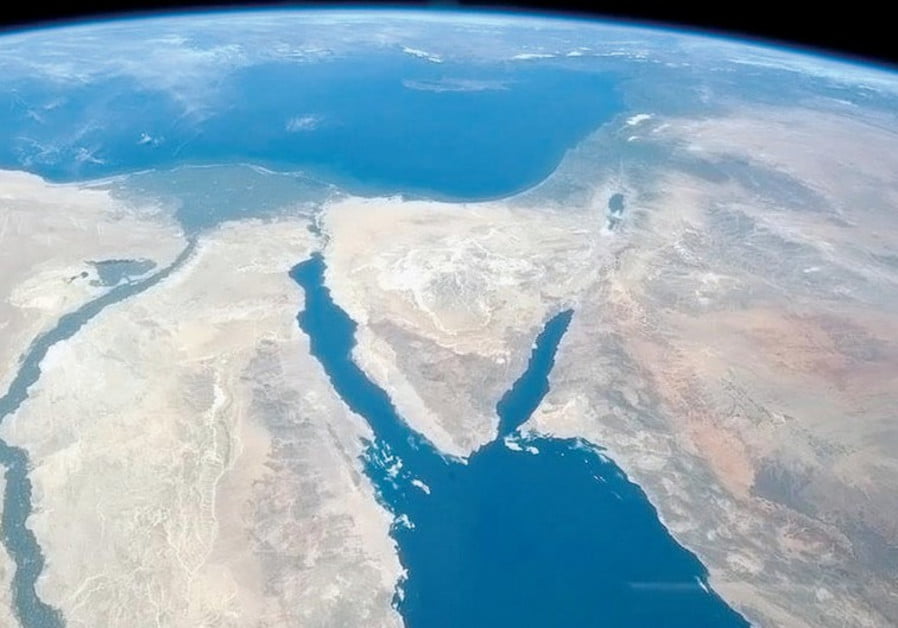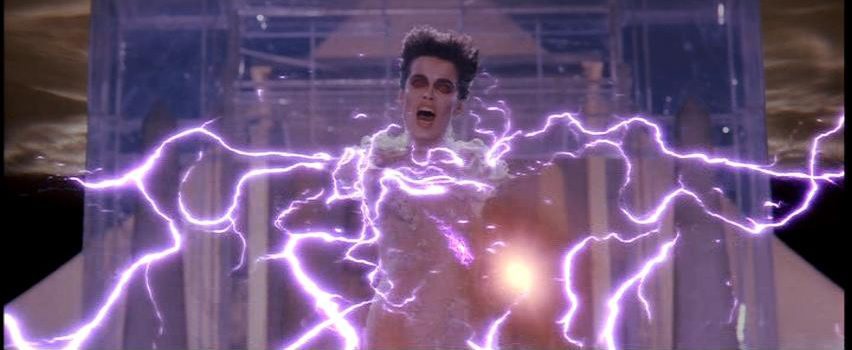
The Israeli government passed a ‘Jewish nation-state’ bill meant to do away with what little progress has been made when it comes to using Arabic names, as well as pushing for yet more settlement building while calling for Jerusalem as the country’s ‘whole and united’ capital.
By Emad Aysha
What prompted this sudden upsurge in ideological fervour? To quote Bibi Netanyahu himself: “Lately, there are trying to destabilise this and the foundations of our existence and rights… So today, we have made a law in stone. This is our country. This is our language. This is our anthem, and this is our flag. Long live the state of Israel.”[1] He described this as a “historic moment in the history of Zionism and the history of the state of Israel.” We’ll see about that and its history.
How fortunate for me that I was reading yet another second-hand book about the Arab-Israeli conflict and a book in Arabic for a change that was light years ahead of what the supposedly objective scientific West is capable of when it comes to our neck of the woods. The book in question is Dr. Abd Al-Azim Ramadan’s The Egyptian-Israeli Confrontation in the Red Sea (1996). Most of the book is legal details, military history, and very eye-opening legal and embarrassing military history.
But, as always, you have to glean a deeper historical angle from reading between the Israeli firing lines. Three historical quips are highly relevant, with this not-too-surprising development in Israeli legislative politics and Netanyahu at the helm.
The Strategic Carriage before the Holy Horse
The first deals with Moshe Dayan's memoirs, talking about the tumultuous days of 1955, when he was called in to meet with Ben-Gurion, then the defence minister (not PM), to get instructions to devise plans to attack Egypt and occupy everything from Al-Arish to Sharm Al-Sheikh to the islands of Tiran and Sanafir.
This was in 1955, not 1956, when the Suez war happened. But then again, that’s the whole point. The Israeli planet's history mushroomed into tripartite aggression long before Abdel Nasser nationalised the Suez Canal.
The British and French, in effect, hopped on board. More to the point, however, is how Dayan describes the mission, which was to free up the straights of ‘Eilat’ free up the straights of ‘Eilat’, to open up the Red Sea to Israeli shipping once and for all. But the straights are called the straights of Tiran.
The chief island is Tiran, whether it’s Saudi or Egyptian, and nobody named the island and the straights anything else, even during the Israeli occupation following the 1967 war. So that means the Israelis were gunning for that island from day one, and everything else, like Palestinian guerrilla attacks from Sinai, was just a put-up job.
Admittedly, Abdel Nasser played into their little game following the Israeli assault on the Egyptian encampment in Gaza – Ben-Gurion’s whole objective behind the unscheduled attack. And it was from that point onwards that Egypt began actively organising the Palestinian fedayeen, not before then, despite what the Israelis and their allies in the West say. The Arabs are the victims and the Israelis the perpetrators, end of story.
The second sticking point, related to the first, deals with the annoying name Eilat itself. The Israelis, from day one, before they advanced on the town of Abu Al-Rashrash and turned it into Eilat, calling the area the Gulf of Eilat, and not the Gulf of Aqaba, as it was and is still called.
Aqaba only lost its ascendancy as the chief port in that area thanks to the Israelis breaking the sea-based siege of the country in the vicinity of Tiran. So, again, the Israelis had their sights on that area from the beginning, even before the Belfour Declaration, along with the Litani and Jordan rivers (pp. 12-13).
Dr Abd Al-Azim Ramadan explains that Palestine is unique in the region since it is the only Arabic country besides Egypt with a coastline between the Mediterranean and the Red Sea. The whole reason the Stern Gang assassinated Count Bernadotte, it emerges, was his intention to hand over the Negev desert to the Arabs, cutting off the fledgling state from the Red Sea. Israel’s first president, Chaim Weizmann, before he even became president, was sent to the US to plead with Harry Truman – who was still thinking about whether to recognise Israel or not – that the new state has access to both the Negev and the Gulf of Aqaba. (At least he called it Aqaba).
Truman remembered the session but seemed to have forgotten the part about the Gulf of Aqaba, only mentioning the Negev. Like the (failed) businessman and minor town politician that he was, the only thing that seemed to change his mind was the economic prospects for that region if the Israelis could take over it, prospect for water, and build a port (pp. 18-19).
In his diary, Weizmann explains the centrality of access to the Red Sea in his and the Zionist way of thinking. It means access to the Indian Ocean and Israel as an alternative route to the Suez Canal. He’s very explicit about that and even speculated about building a canal to Eilat to make this a reality, saving time for international shipping out of the kindness of his heart (p. 17).
That project is closer to fruition today than ever because of the plan to connect the Dead Sea to the Red Sea through an artificial canal with a high-speed rail line from the Mediterranean coast for freight carried by ships. A project, sadly, the Palestinian National Authority signed up for quite a long time ago. The logical conclusion to the takeover of Abu Al-Rashrash.
There were all sorts of strategic reasons for the British to hand over Abu Rashrash to the Israelis – they ordered Jordanian forces out of the well-fortified area (pp. 24-25) – since they owned the oil refining plants in Haifa fed by the pipeline from Iraq.
The Iraqis stopped the oil flowing, which meant the only way to keep those Haifa facilities running was to get oil by sea from Eilat, and the siege Egypt imposed on shipping was starving both the Israelis and the British, weakening the strategic utility of Israel as a client state of the British.
Now for the third, final, and possibly weirdest of the historical quandaries, also contained in Dayan’s diaries. The name of Dayan’s plan to take the Straight of ‘Tiran’ was, you’ll never guess, Kadesh (pp. 80). This is as cryptic a label as Eilat, and both are the proper subjects in the following section.
Misplaced Geographies, Misspelt Names
Before they made it into a port city, the name of the port city is taken from the Bible, concerning King Solomon and how he finally reached the Red Sea and built a port or outpost there (Dr Abd Al-Azim Ramadan, pp. 13). But that’s just a sideshow, as established above. Abu Al-Rashrash was a booby prize. From before the War for Palestine, the fundamental objective was Aqaba itself.
The Zionist colonisers, and not just the Stern Gang, took it for granted that Jordan was part of Palestine, meaning Aqaba or at least the Gulf of Aqaba would be theirs. (Aqaba originally was part of the Hijaz before being handed over to Jordan when the exiled Hashimites, pp. 14 created it).
When the colonisers saw they couldn’t have Jordan and the ready-made port of Aqaba, they went after Abu Al-Rashrash and dredged up the baggage of theology history after the fact. And to add insult to injury, the name Eilat is taken from Elath, which is believed by many historians and archaeologists to be… believe it or not, Aqaba.
So the Israelis, failing to take their properly designated historic city, which they only wanted for strictly strategic and economic reasons, to begin with, substituted it for another place entirely and made it into a historical town.
What is more, when you read the Biblical passages about the historical Elath, whether it was Aqaba or not, you find that it was—just like Jerusalem—not a Jewish city to begin with. The Jews' conquered it from the Edomites, but only for a short time before they recaptured it. So it wasn’t Jewish to begin with, even in their scriptures.
According to the Bible Places website, citing (Deuteronomy 2:8), it wasn’t even part of the promised land, just a temporary stopping-off point on the way to the holy lands!
Not to forget that the Jewish stay there itself was condemned in the Bible because it’s also where Solomon’s legendary copper mines were located, and so was taken as a symbol for subjugation and slavery, just as was the building of the Temple. And those mines weren’t Jewish, to begin with, either, but ancient Egyptian.
Now for ‘Kadesh’. I’d assumed, rather naively at first, that it was about the Battle of Kadesh between the Egyptians and Hittites at the time of the youthful Ramsis II. The Israelites had nothing to do with that battle, and to my knowledge, it’s not mentioned in the Bible, so why on earth would Dayan use that particular name?
It ‘could’ be that he imagined himself fighting a decisive battle against the Egyptians, like the Hittites, which resulted in a standstill with a peace treaty between the two powers. Also, remember that the Israelis described the war with Egypt in 1973 as the ‘war with Africa’, so they see themselves as honourary Asians up against the hordes of dark-skinned Africans.
But, as a stickler for detail, I went online to check the Biblical meaning of Kadesh – pronounced Qadish in Arabic – and guess what I found out. In Hebrew, the term means ‘holy’ and is a generic term used to designate several places or kinds of places. And what kinds of places are those?
Not so much holy places, in the way we think of them in our modern frame of mind, but safe and secure places full of water and fruits and veggies and surrounded by hills, places where people could take refuge from the dry, arid wilderness where it’s easy to get lost and be picked on by marauding nomadic tribesmen. As Arabs and Muslims, you all know what I’m getting at, don’t you?
Please don’t take my word for it. I found on the internet: “Kadesh means holy; it is the same word as the Arabic name of Jerusalem, el-Khuds”[2]. (It makes you wonder what Qadisiyya means in Iraq. Hmmm). Jerusalem is Urr ‘Salem’, the safe, peaceful or secure place because it’s built on a hill surrounded by protective hilltops with fortifications on them, with an in-land water source and underground aqueduct to withstand sieges. (It’s been said that Urr, a Sumerian word originally, means ‘rooted’ and ‘well-watered’).
On this basis, one could surmise that Jerusalem started as an oasis surrounded by hills where people took refuge. Then, gradually, with time, as generations of people settled there, a city was born. Al-Masjid Al-Aqsa is always described as a ‘blessed area’ full of water, vegetation, and exotic fruits.
Not to forget that the Quran describes Mecca as a wadi (valley) with no vegetation but insists that the Prophet Abraham (PBUH) made it into a holy place by providing security to those fearful and by feeding and watering those who were hungry and scared.
The fact that the valley is without vegetation is part of its security structure because armies don’t journey into arid mountainous terrain where they can’t supply themselves with water. And there was a Kadesh close to Ezion-Geber, which is again outside of the remit of the promised lands and in Edom (Numbers, chapter 33: verses 35-37).
So Mr Dayan was seeing what he was doing in holy terms, securing Israel’s existence. But who would have thought he’d hang himself with his petard in the process? He confirmed that the ‘holy’ places they craved so much were, in fact, oases and natural fortifications – no different than the valley Sparta was built in – and were given that designation by the people that lived there, outside of the land of Israel.
A Very Last Word
The same goes for Al-Quds if you ask me since the future King David (PBUH) was heading down south into Philistine territory, beyond the borders of the promised land, at least in the movie version, so much for Jerusalem being the united and eternal capital of Israel and downgrading Arabic in favour of Hebrew.
It’s Hebrew, as a ‘Semitic’ language, that exposes the very falsity of all of their historical-religious claims. And better yet, it exposes the strategic logic that underlies their military and economic decision-making.
It’s no coincidence that Freud was the guy who understood the full significance of the ‘slip of the tongue’. He concocted the idea while conversing with a fellow Jew, a self-hating Jew, who inadvertently exposed the hatred he had repressed all these years in his specific choice of wordings and phrasings.
That kind of dualistic existence was a problem in his day and age as a Jew, and it seems to have persisted into the contemporary world with the Zionists, imagining places to be theirs because it’s convenient and imagining those places to be places in the Bible to justify it all.
That still doesn’t tell us where the Israeli capital was at the time of David and Solomon and if it was Jerusalem, and frankly, I’m suspicious of the whole Elath tie-up with the Red Sea. (The Red Sea wasn’t called the Red Sea at the time, and the ‘Sea’ Moses [PBUH] crossing was the sea of ‘reeds’ or marshy area, and who knows where that was).[3] But I’ll have to leave that to another literary diatribe. I will say this, however.
The Battle of Qadesh, or Kadesh. Just by pure coincidence, I’d watched a documentary some time ago that explained what Ramsis II was after there was a nearby valley full of goodies!
NOTES:
[1] "Israeli parliament passes contentious Jewish nation bill”, USA Today, July 19, 2018.
[2] https://www.biblegateway.com/resources/dictionaries/dict_meaning.php?source=3&wid=S9073.
[3] Please see Dennis Bratcher, “The Yam Suph: ‘Red Sea’ or ‘Sea of Reeds’?”, The Voice, http://www.crivoice.org/yamsuph.html.






